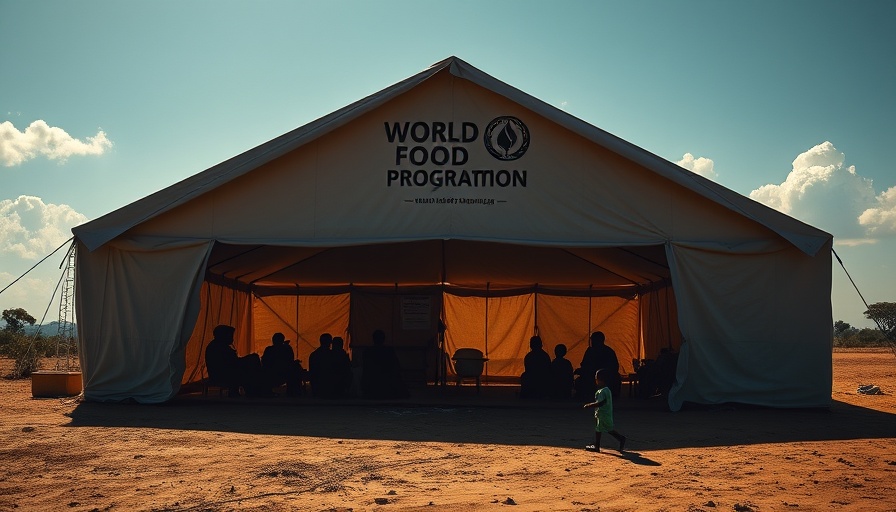
The Growing Crisis: How Funding Cuts Affect Global Hunger
The United Nations World Food Programme (WFP) has long been the vanguard in the fight against global hunger, serving over 100 million people as recently as 2024. However, dire financial challenges threaten its operations, with projected funding cuts estimated at 40%. This unprecedented crisis could have devastating consequences for those relying on food aid, especially as the organization's ability to deliver assistance is projected to shrink drastically.
The Unequal Impact of Political Decisions
Political priorities are shifting globally. Historical context shows that international humanitarian aid, especially food assistance, often battles for funding against military expenditures and national security initiatives. With donor countries like the U.S. and those in Europe cutting back on contributions, the WFP faces the grim reality of needing to reduce staff by approximately 6,000 positions—resulting in a staggering 25-30% reduction across the organization. This isn't just an abstract statistic; it translates to fewer hands on deck to deliver aid to those in dire need.
Community Health: The Human Cost of Aid Cuts
The implications of these cuts extend beyond just food shortages. With extensive experience in the humanitarian field, experts warn of a severe uptick in mortality rates in vulnerable populations. Paul Spiegel from Johns Hopkins University states, "We're going to see enormous amounts of increased numbers of deaths in these humanitarian settings because of both the magnitude of these cuts and the abruptness of these cuts." For communities that have already survived wars, famine, and health crises, this is a potent reminder of how interconnected health, stability, and aid truly are.
Finding Solutions: The Role of Community and Innovation
Despite these bleak circumstances, innovative solutions could emerge from this crisis. Previous global crises have sparked changes in how aid is delivered and funded. Newer, more sustainable approaches such as community gardens, cooperative food networks, and local sourcing can bridge gaps in food security.
Organizations can focus on empowering local communities through educational initiatives, enabling them to take charge of their food security. Integrative health and wellness approaches might emerge to create resilient systems that combine physical health, community wellness, and nutritional education for preventative care.
What Lies Ahead: Predictions for Global Food Security
The future of the world's food security hinges on how quickly the international community can respond to the WFP's challenges. If countries prioritize funding for humanitarian aid like they do for military endeavors, we could see a revitalization of support for programs like the WFP. However, the key will be balancing these needs against other global crises—including climate change, migration, and economic instability—that loom large on the horizon.
The Call to Action: Why We All Need to Care
As we witness these developments, it’s essential for each of us to stay informed and advocate for humanitarian aid in our communities. Whether it’s through donations, volunteering, or spreading awareness about the global food crisis, our collective effort can have a significant impact. Engage with local organizations that prioritize food security initiatives or champion policy changes in your region.
Understanding the support structures around community health and wellness is crucial. By fostering a culture of awareness and action, we can not only prepare for the immediate crisis but also build more resilient systems for the future.
 Add Row
Add Row  Add
Add 




 Add Row
Add Row  Add
Add 

Write A Comment